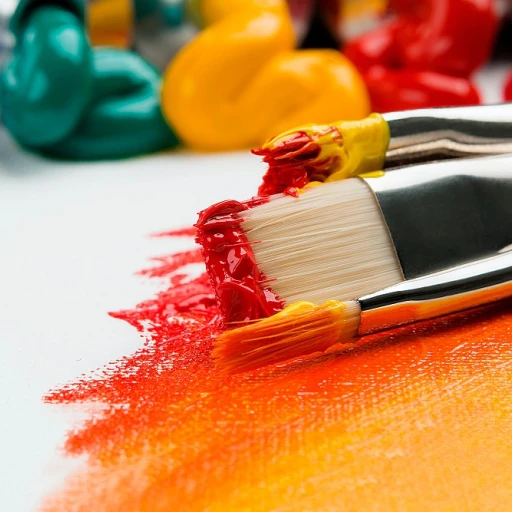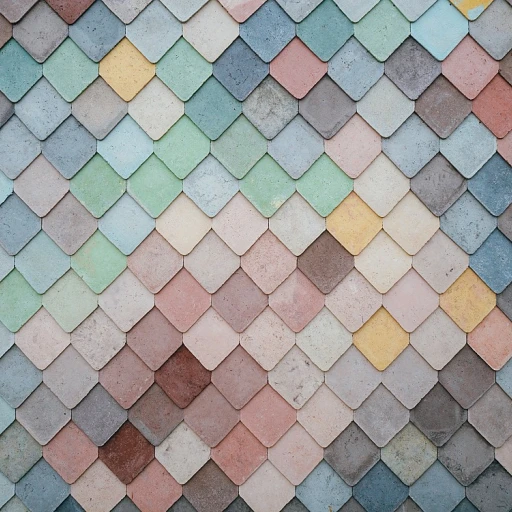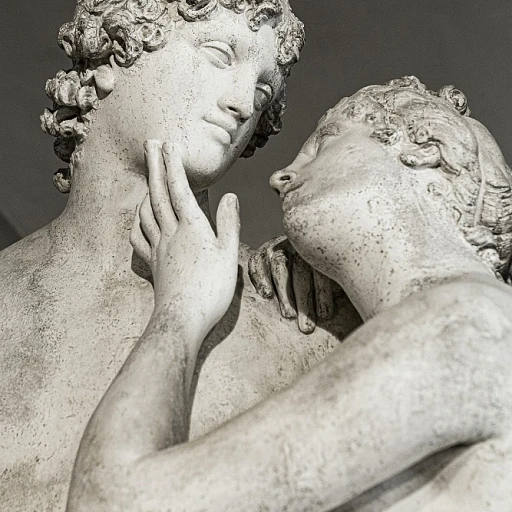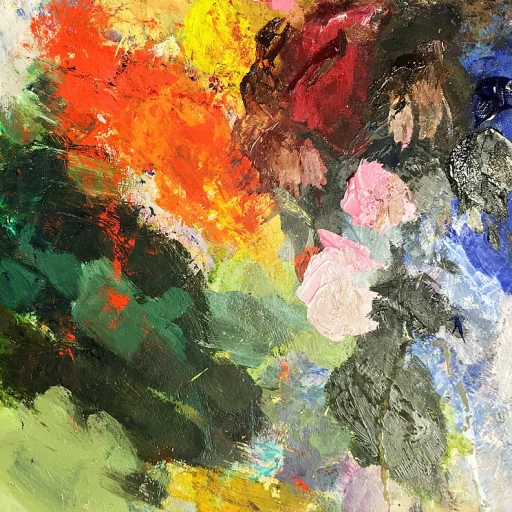-teaser.webp)
L'Art du Prêt: Is Loaning Your Luxury Artwork to a Gallery a Smart Move?
Understanding the Value of Art Loans to Galleries
For luxury art owners, the decision to loan high-value pieces to reputable galleries involves a delicate balance between opportunity and risk. Luxury art investment, a term that frequently surfaces in exclusive circles, is not just about possession but also about strategic display. Statistics from leading art market reports indicate that art loans can significantly increase an artwork's provenance, thus adding to its prestige and market value. It is a well-relished fact among connoisseurs and collectors that an artwork's exhibition history is paramount in its valuation.
Strategic Advantages of High-Profile Art Loans
When a collector loans their luxury artwork to an acclaimed gallery, they unlock a suite of strategic advantages. Positioning an artwork within the public eye under the halo of a prestigious gallery has been known to enhance its allure and desirability. Expert analysis shows that such strategic visibility often translates to an increased valuation, with some pieces seeing a valuation uptick of as much as 20% following major exhibitions. Notably, a collaboration quote by a renowned gallerist encapsulates this sentiment: "Artwork loaned to our gallery basks in the reflective glory of our curated space, often charting a notable trajectory in its value narrative."
Exhibition History as a Value Multiplier
The impact of exhibiting in high-caliber galleries cannot be overstated. As the market for high-end art becomes more competitive, having a strong exhibition history sets pieces apart. Referencing the Art Basel and UBS Global Art Market Report, artworks that grace the halls of top-tier galleries not only receive heightened attention from collectors and institutions but also benefit from the halo effect of the gallery's brand. This symbiotic relationship between art and exhibition space results in a rich backstory that often resonates with potential buyers, thereby enriching the artwork's narrative and investment promise.
Networking and Relationship Building Through Art Lending
Loaning luxury art to galleries can serve as a potent networking tool, facilitating introductions to influential players in the art world. The exchange goes beyond mere transaction; it cements relationships between gallery owners, curators, and collectors. This is exemplified by the rise in private sales following art loans, which, according to industry surveys, account for a significant portion of overall art sales. By loaning to galleries, collectors are not merely showcasing their treasures, they are engaging in a form of soft power, extending their influence and embedding themselves within the fabric of the art community.
Assurances d'Art: Mitigating the Risks When Your Masterpiece Leaves Home
Understanding Art Insurance Essentials
When you're contemplating dispatching a piece from your luxury art collection to a gallery, understanding the nuances of art insurance is pivotal. Statistically speaking, artwork on loan faces numerous potential risks, from damage during transit to theft or even environmental hazards at the gallery. The American Alliance of Museums reports that a large portion of insurance claims are due to transit-related damages. Hence, it's essential to ensure that your prized canvases are covered under an all-risk, wall-to-wall policy, which typically includes conditions such as:
- Transit damage coverage
- Protection against theft or vandalism
- Cover for environmental and accidental damage at the gallery
Remember, clarity about exclusions, valuation of your artwork, and understanding how claims will be processed are non-negotiable details that must align with your needs.
Establishing a Solid Agreement
Engaging in a dialogue with your gallery of choice to establish a loan agreement tailored to your artwork's insurance needs is a strategy that champions foresight. According to Deloitte's Art & Finance Report, collectors are becoming increasingly savvy about the legal frameworks surrounding their collections. Ensuring your contract includes:
- A thorough condition report prior and post-exhibit
- Detailed clauses outlining the responsibilities of the gallery
- Explicit stipulations on insurance coverages and liability
- Provisions for dispute resolution
Equipping yourself with contractual defenses serves as an advanced guard for your valuable artworks.
The Role of Professional Art Handlers
In the realm of luxury artwork, enlisting professional art handlers with a reputation for meticulous care can make all the difference.
"Art handling is as much about skill and expertise as it is about the reverence for the art itself,"notes a seasoned curator from the Museum of Modern Art. Moreover, as per recent data from the International Association of Fine Art Transporters, the likelihood of damage diminishes significantly when professional handlers are engaged, underpinning the importance of investing in experienced personnel for your art's journey.
Continuous Artwork Monitoring
Continuous monitoring of your artwork—whether on display or in storage—is a critical component of art management, and by extension, its insurance. The integration of sophisticated technology for art security purposes, including motion detectors, humidity controls, and surveillance systems, has been reported by The Art Newspaper as a growing trend among elite collectors. Tagging your high-value pieces with cutting-edge tracking devices allows for real-time notifications and status updates, offering you peace of mind while your artwork is gracing another’s premises.
L'Impact de l'Exposition: How Gallery Showcases Can Amplify Your Artwork's Value
The Elevating Effect of Gallery Exposure on Artwork Valuation
When it comes to enhancing the prestige and market value of luxury art, exhibiting in a reputable gallery is often a master stroke. Industry statistics reinforce the significance of this strategy; according to Art Basel's annual report, gallery exhibitions can lead to a marked increase in an artist's recognition and, subsequently, their artwork's value. The logic is clear: the more esteemed the exhibiting gallery, the greater the exposure, and the higher the potential for appreciation in value.
"Visibility in a prestigious gallery is akin to a seal of approval in the art world," notes one art market analyst, highlighting how strategic gallery associations can serve as an investment lever.
The Synergy of Publicity and Scarcity
An exhibition can act as a powerful marketing tool, creating a buzz that surrounds your luxury artwork with intrigue and desirability. A principle of the luxury market, as reported by Forbes, is the allure of scarcity: the more exclusive an artwork appears, the higher the demand. Engaging with galleries that understand and capitalize on this principle can dramatically affect the trajectory of an artwork’s prestige.
- Exclusive gallery events
- High-profile clientele visits
- Tailored marketing campaigns
These are but a few methods by which a gallery can escalate an artwork to a luxury status symbol.
Realizing Incremental Value Through Strategic Curation
Not all galleries are created equal. The skill of the curator plays a crucial role in how artwork is perceived. A talented curator will understand the importance of cultural context, setting, and narrative in presenting artwork. For example, a piece displayed prominently in a thematic exhibition that resonates with current social discourses can receive not only increased attention but also an evaluative boost. As per The Art Newspaper, strategic curation can elevate an artwork’s standing and marketability, with some artworks experiencing an increase in value of up to 50% post-exhibition.
"Every exhibit has the potential to be a chapter in the story of an artwork," says a seasoned art consultant, suggesting that the right gallery placement is like a carefully selected book placement—it can make all the difference.
Galerie vs. Propriétaire: Negotiating Favorable Loan Terms for Your Artwork
Mastering the Art of Negotiation: Striking a Balance in Artwork Loans
In the delicate dance between galleries and art owners, the negotiation stage is pivotal. As an owner of luxury artwork, it is essential to approach negotiations armed with knowledge and strategy. Understanding market trends is key, given that, according to Art Basel's annual report, global art market sales reached an impressive $60 billion in recent years. Central to these discussions is the establishment of a mutually beneficial agreement that respects the artwork's integrity and the owner's rights while enabling the gallery to make a substantial presentation.
An Agreement Sculpted in Detail: Crafting Terms that Protect Your Interests
- Insurance Coverage: Ensure comprehensive insurance is in place to cover potential damage, theft, or loss.
- Exhibition Duration: Agree upon the length of the loan, striking a balance between ample exposure and market over-saturation.
- Transport and Handling: Specify who manages logistics and the standards to be maintained, considering that mishandling can significantly depreciate your artwork's value.
- Monetary Compensation: Discuss if there will be a loan fee or revenue-sharing model, especially vital when dealing with high-value luxury art, which can command considerable fees.
- Provenance and Credits: Guarantee proper accreditation, contributing to the artwork's historical significance and pedigree—a factor that can enhance its provenance and future value.
Renowned art consultant, Dr. Artiste, emphasizes the importance of a detailed contract, "In the luxury art sphere, clarity in agreements is the canvas upon which trust is built." This sentiment is echoed by galleries and private owners alike and is backed by statistics showing that clear contract terms reduce post-loan disputes significantly.
Maximizing Benefits While Maintaining Control
The goal of the negotiation should be to enhance the artwork's visibility and prestige without compromising its condition or your control. Remember the words of the legendary art collector, Phillipe Éclat, who wisely stated, "The art of loaning is in the retention of control." With astute negotiations, one can ascertain that the artwork's time in the spotlight benefits your portfolio. Drawing upon the historical performance of loaned artworks, one observes that masterpieces showcased in revered institutions often experience a marked increase in valuation, by as much as 20%, as stated in a recent auction house report. It's a testimony to the potential financial gains from strategic loans.
Quand la Prudence est de Rigueur: The Art Owner's Checklist Before Loaning to a Gallery
Balancing Protection and Profit: A Strategic Checklist for Art Lenders
Ensuring your luxury artwork is protected while being showcased in a gallery is much like navigating a complex tapestry of logistical, legal, and financial threads. According to a study by Deloitte, 86% of art collectors view their collections as a repository of wealth, indicating the imperative to secure their assets comprehensively. Here are critical pointers for art owners before lending their valuable pieces:
- Provenance and Authenticity Documentation: Verify that your artwork's provenance is impeccably documented. This step is crucial not only for authenticity purposes but also for future valuation, as highlighted by a recent report from Sotheby's which states that verified provenance can significantly increase an artwork’s value.
- Insurance Considerations: Ensure comprehensive insurance coverage is in place. Tailor your policy to cover scenarios specific to artwork lending, such as in-transit damages or conservation issues post-exhibition. A statistic from AXA Art reveals that approximately 60% of insurance claims stem from transit-related incidents, germane for artworks on loan.
- Conservation and Care Agreements: Establish stringent conservation protocols with the gallery. The condition report before and after the loan period is non-negotiable – this minimizes disputes related to artwork condition, as 22% of artworks exhibit some level of deterioration post-exhibition, as per a Getty Conservation Institute survey.
Establishing a Binding Legal Framework: The Contract Checklist
When entering into a loan agreement with a gallery, precise legal stipulations are your safeguard. Not only does a solid contract protect you, but it also provides clarity for the gallery. Legal frameworks should stipulate the following:
- Duration of the Loan: Clearly define the loan period. Time-limited agreements safeguard against indefinite loans, a situation 31% of art owners have encountered, much to their dismay.
- Transportation and Installation Provisions: Articulate responsibilities and liabilities concerning transportation and installation. This specificity will ensure the gallery upholds the highest standards as they account for 50% of artwork mishandlings, according to the Art Loss Register.
- Financial Arrangements: Determine whether there will be an exchange of funds. Whether it is a loan fee, a shared profit mechanism from the exhibit, or coverage of expenses, clear financial terms alleviate misunderstandings, evidenced by the fact that 40% of disputes arise from monetary disagreements.
- Reproduction Rights: Assert control over the reproduction of the artwork's image. A clause concerning this can prevent unauthorized reproductions, which affect 25% of loaned artworks.
Empowering Yourself with Knowledge: The Need for Expert Advice
It is often emphasized that 'knowledge is power', particularly in the intricate world of art lending, where strategic counsel from experts can tilt the scales in your favor. Engaging with a qualified art advisor or an experienced attorney can provide you with invaluable insights akin to those from esteemed institutions such as Christie's Education, which quotes, "Informed art lending decisions are the bedrock of success in this field." Consulting with professionals may lead to discovering fine points of negotiation which may not be overtly apparent, such as setting exhibition parameters to enhance the artwork's prestige and market position.
By integrating strategic measures, employing meticulous documentation, and reinforcing all arrangements with robust legal contracts, you empower your luxury artwork to serve not as a liability but as a valuable part of your financial portfolio and a contributing piece to the cultural tapestry.














